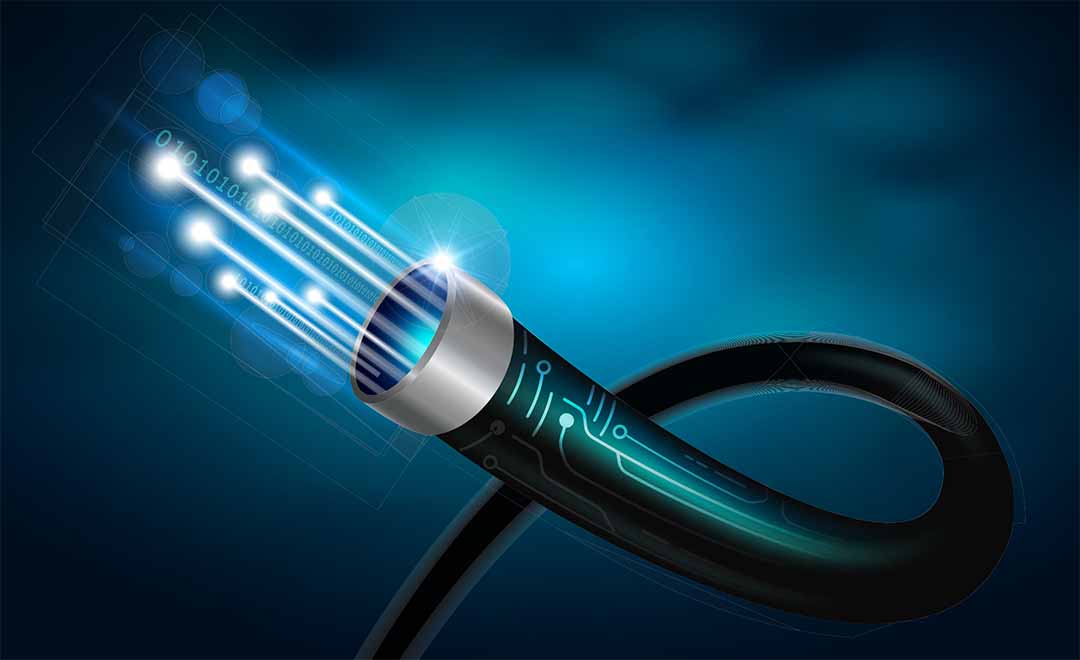A network cable is a type of cable that connects devices to an Ethernet or other type of network. It’s an essential part of any IT infrastructure, whether at home or in a business. Because so many things rely on networks today, from computers to smart TVs and everything in between, your network cables must be working properly. A quick look at some basic specs about this piece of technology can help you understand why it’s so necessary for networking purposes:
Network Cabling Definition
Network cabling is the physical infrastructure that connects computers and other devices to a network. It can be installed by your IT department or an outside contractor, but regardless of who does the installation, it’s essential to ensure that network cabling is installed correctly.
A poorly designed network can cause data loss or downtime. To prevent these issues from affecting you and your business, we’ll explain what network cabling is and why it’s so important to have it installed correctly.
Why is network cabling important?
Network cabling is the backbone of your network. It is the conduit that allows your network hardware to communicate with each other, and it’s also the medium that carries data from one device to another. In short, the infrastructure allows you to connect your network devices so they can share information or resources such as a printer or internet access.
Network cabling is a crucial part of any network. It’s how the computers and devices that are connected to the network communicate with each other. Without network cables, it would be impossible for any device on your network to send or receive data. That’s why it’s important to understand what kind of cable you’ll need for your network and why you should invest in high-quality cabling when building or upgrading your business’s network.
See What Cynergy Can Do For You
For expert network cabling services, including installation, relocation, and Wi-Fi troubleshooting, contact our team today.
Types of Network Cabling
To understand network cabling and its importance, you should know the different types of network cables that are available. The following are the four main types of network cables:
Coaxial Cable
This type of cable is commonly used in older buildings. It uses a copper core surrounded by an insulating material, then a metal sheath. The metal sheath gives it strength while keeping out outside elements such as water or dirt. It is straightforward to install and is often used in home networks. This type of cable is not recommended for use in commercial buildings because it can only transmit signals over short distances.
Fiber Optic Cable
This type of cable was developed as a replacement for coaxial because it can carry more data over longer distances with less loss than coaxial cables. Fiber optic cables consist of two thin pieces (sometimes called fibers) made from plastic or glass that transmit information through pulses of light instead of electricity, like other types of cables do. They have several advantages, including faster transfer rates, greater bandwidth capacity, immunity from electromagnetic interference, longer distances between nodes (100 meters compared to 10 meters on UTP), resistance against corrosion and fire damage if sealed adequately at each endpoint within a conduit leading outside building walls which may contain one or more fiber optic pair(s).
Shielded Twisted Pair (STP) Cable
Shielded twisted pair (STP) cable is a single-pair wire consisting of four pairs: two pairs for transmitting signals and two for receiving them. This type of cable is commonly used in telephone systems and computer networks because it can withstand interference from power lines, radio waves, and other sources that could otherwise disrupt regular operation by introducing noise into signals being transmitted over long distances via copper wire connections between servers or desktop computers located within buildings
Unshielded Twisted Pair (UTP) Cable
Unshielded twisted pair (UTP) is most commonly used in telephone lines because it is cheaper and easier to install than other cabling systems, such as fiber optic cable or coaxial cable. UTP is also used in computer networks because it can be run through walls and ceilings without needing additional tools or special equipment. This cabling system relies on copper wires that are twisted around each other to reduce interference from external sources that could disrupt data transmission over long distances via copper wire connections between servers.
Network Cabling Benefits
Network cabling is the backbone of your business. It allows you to connect all your computers and devices to share files and information with the world.
But it isn’t just about connecting—cable networking offers many other benefits. Here are some of the best:
Improved network performance
Network cabling helps improve a network’s performance by providing increased bandwidth and better signal quality, ultimately allowing you to transmit data faster. You’ll find that with improved signal quality, you can stream media more quickly, download files in less time and even engage in video conferencing without experiencing static or interference from other networks.
Increased security
Many people forget about network security when it comes to cabling their offices or homes, but it’s an essential part of any home or office network setup. Suppose you want to protect your computer network from outside threats such as viruses or hackers. In that case, installing proper cabling can help prevent them from gaining access to your system through unprotected cables such as USB ports or wireless routers.
Lower costs
Installing proper cabling systems will reduce costs by allowing companies who have poor infrastructure (weak signals) no longer need expensive equipment like repeaters which cost thousands of dollars each month just because they don’t have enough bandwidth available within their walls so they must add additional hardware devices called “repeaters” onto their existing systems which increases overall operational costs significantly over time due solely on one factor: inadequate planning during initial construction/installation stages before plopping down thousands upon thousands more dollars annually afterward just because we didn’t think ahead properly…
Increased productivity
A more robust and faster network will allow employees to get their work done more efficiently. This will lead to a more productive workforce and increase your business’s overall productivity. The more efficiently your employees can complete their daily tasks, the less time they will spend on them and have available to focus on new projects or other areas that need attention.
Cynergy Tech Network Cabling Services
We hope this article has helped you understand what network cabling is and why it’s essential. Cynergy Tech can help you find the right solution for your business by providing a wide range of IT management solutions, infrastructure services, and support. We are the best at what we do. We have a lot of experience and an excellent reputation.
If you need network cabling services, our team is here to help. Our experts can install your new cables, move existing ones around or troubleshoot any issues with your Wi-Fi connectivity.
Cynergy Tech is committed to a job well done. If you’re unsure where to start when considering upgrading your office’s networking capabilities, let us help figure out what infrastructure upgrades would work best for your company.







